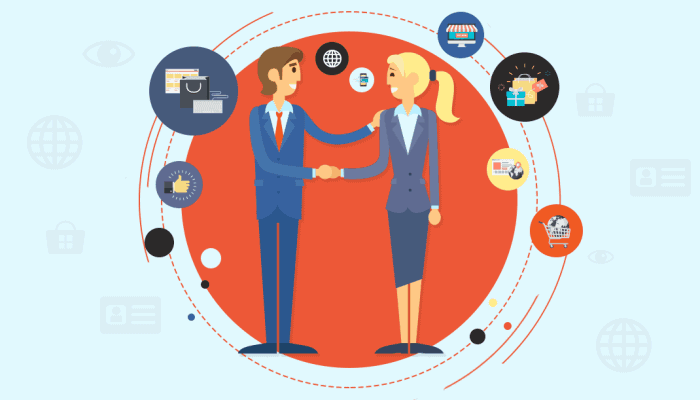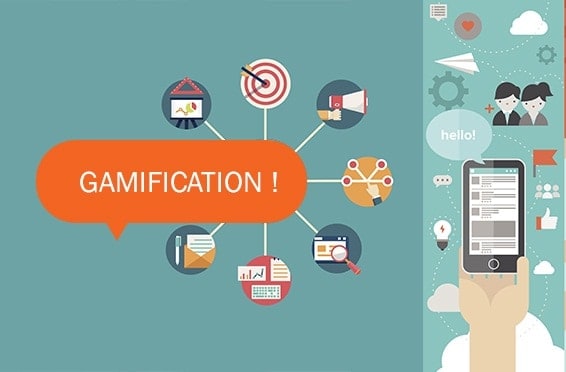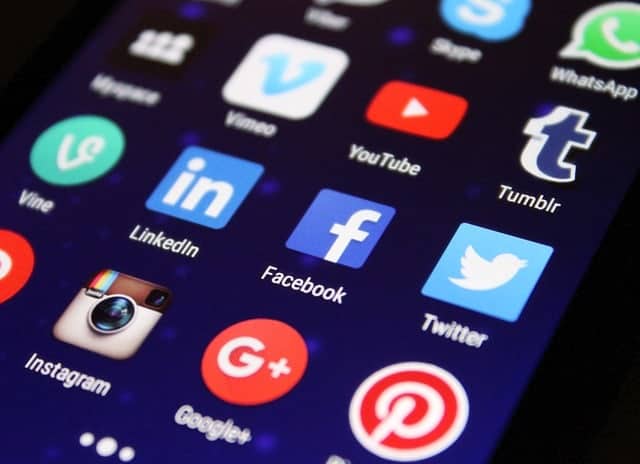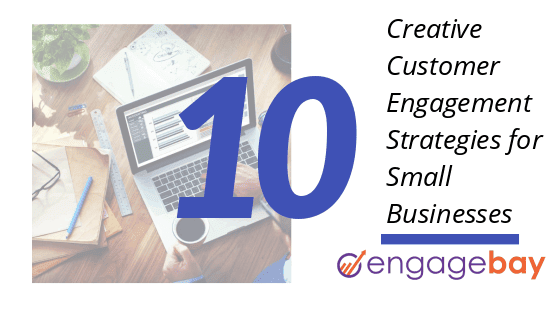Customer engagement tells you what customers feel about your brand. If they feel engaged with a brand, they are more likely to purchase its products. You must fix into mind that customers are the most important aspect for your business. It doesn’t matter what you sell. If your customers are not loyal, you are most likely to fail.
Table of Contents
What is customer engagement?
Customer engagement is not only the interaction of a customer with a company but also with other customers. It is the emotional connection that customers have with a brand. The main aim of customer engagement is to encourage customers to interact with a brand and foster their relationship with it. It is more focused on value creation than revenue generation.
Basically, customer engagement is a collection of processes, tools, and resources that an organization uses to build relationships with their customers.
Why is customer engagement important?
- 1. Be a good listener
- 2. Give customers rewards and incentives
- 3. Use Gamification
- 4. Make proper use of social media
- 5. Customer engagement via mobile apps
- 6. Personalization
- 7. Focus on converting free trial users to paid ones
- 8. Generate interactive content
- 9. Implement in-product messaging
- 10. Surveys and Polls
A recent study by Gallup has found that customers that are engaged with a brand generate 23% more revenue than ordinary customers. Customer engagement builds trust, healthy relationships, loyalty and better communication with customers.
A lot of people actually buy things online they had no intention of buying because of personalized recommendations. A lot of e-commerce sites have turned this idea into a major portion of their business plan. Whenever you login into your account, you get to see a lot of personalized recommendations, thanks to great customer engagement strategies.

Customer engagement helps in increasing revenue. According to a survey conducted by Kelton Global, 40% of users have spent more because of the personalized shopping experience.
To retain their existing customers, companies are going beyond just quality products and attractive prices. With great customer engagement, people would definitely return to the same company to buy more in the future.
Now that you have got a gist of what customer engagement is and its importance, here are some strategies that your organization can implement to get the maximum benefit out of it.
1. Be a good listener
When any customer contacts you, spend the first few minutes in empathetically listening to them. Everyone wants to be heard. You can set-up a 10-minute listening policy for your helplines so that you are better equipped with information to help them.
You should not just listen to your customers, you ought to pay attention to all the fine details and understand them. Customers are always in a hurry. They want their queries to be resolved as early as possible. It is your responsibility to shorten the response time. Even if you are unable to solve a query in a single sitting, promise consumers that you will solve them very soon.
Listening will show your customers that you actually care about them and the equation is pretty simple, happy customers buy more. When a customer posts about your company on social media, be it a compliment or a complaint, you must take efforts to respond. A report from Applied Marketing Service has revealed that customers who receive responses to their tweets are willing to spend 3-20% more on average-priced items.
2. Give customers rewards and incentives
Rewards are a great way of reminding customers of the benefits of your products and services. People like it when they receive something back. To improve the impact of engagement, you can give rewards for the user-generated content such as reviews, feedback, etc.
When customers purchase any product, you can give away some branded swag or an accessory. However, if you give something without considering the preferences of a customer, you will most probably miss the opportunity of completely engaging with them. If you truly want to engage with your customers, personalize the gift to suit them.
You can encourage repeat purchases by giving customers a discount on the next order. Once they make a purchase and get reward points that are applicable to the next order, they are less likely to turn towards a competitor for a slightly cheaper price. The best way to do this is by creating a creative company-specific currency as it will make the reward program more personalized, memorable and professional.
These are just a few ways in which you can offer incentives and rewards. At the end of the day, the aim of reward programs is to keep the customers interested in your products.
3. Use Gamification

Gamification is a great way to motivate, influence and improve the loyalty of customers. Gamification boosts customer engagement as it deals with the natural tendencies of people to socialize, learn, master, compete and achieve.
Gamification is the process of embedding game mechanics to already existing business processes to motivate participation and engagement of users. The data-driven techniques used by game designers to engage players are applied to non-game real-world scenarios to produce better results.
It generally works the best right after the customers sign up. Once a user signs up, you can offer them rewards for new referrals. To attract users to your site, you can also host a contest that requires users to register on your site to take part.
The main aim of gamification is to make the loyalty program fun and enticing. It should inspire and motivate customers to take part in the program.
In a nutshell, gamification is not about creating games for business purpose. Moreover, it does not even involve creating anything new. It is about modifying the already existing processes in such a way that you get deeper loyalty, high customer satisfaction, better ROI and more sales.
4. Make proper use of social media

Instead of simply using social media as a platform, use it as an engagement tool. According to a survey by We Are Social, over 2.3 billion people around the world are active social media users.
Social media platforms can help you connect with a number of users and significantly boost customer satisfaction. With social media, you can actually build a rapport with audiences, which is something traditional means of advertising are not good at. You can actually connect with your audiences on a more personal level.
You can make your audience happy by giving various offers and discounts via social media. Moreover, just a simple reply to customer queries posted on Twitter or Facebook can help in building trust and boost engagement.
Apart from using social media to merely connect with customers, you can use it to obtain user data and then analyze it to get ahead of your competitors.
If you are active on Facebook but your main audience is on Twitter, you can have a hard time engaging with them. Keep a check on where your customers are mentioning you the most to make sure that give prompt responses to questions asked by them.
5. Along with your website, encourage customer engagement via mobile apps

Using websites for improving customer engagement is not a new phenomenon. However, with an extensive increase in the use of smartphones, using apps can give certain additional benefits that can help in retaining and engaging customers.
Your app can act as a loyalty card, a points system that sits on a user’s phone. To further improve the reach, you can incentivize referrals to new users.
A lot of apps support push notifications which are a great way of interacting with customers and grabbing their attention even while they are not actually using the app. However, you need to be careful while using them. If users find them irrelevant or intrusive, they might just switch off notifications altogether. To make their experience with push notifications better, you can include their name or push a product in their abandoned cart or the one last viewed by them.
Google, as well as Apple, think that app reviews are more than just a medium of information that users consider before downloading. If your app is really useful, positive reviews and high ratings can help your company gain popularity easily. On the other hand, negative reviews can give you a chance to make improvements to the existing system.
6. Personalization

Though companies have realized the importance and potential of personalization in customer engagement, a lot of them are still struggling to implement it in a proper way. With intelligent use of personalized data, companies can create relevant and unique experiences that can help in gaining customers’ attention and thus making them loyal to their brand in the long run.
According to a study by SalesForce, 57% of customers are actually willing to share personal data in exchange for personalized offers and discounts. Creating generic content for all types of users doesn’t produce a great success rate. People see tens of advertisements daily. To stand out among others, you ought to offer something that surprises them and personalization is a great way to do this.
With personalization, customers feel as if the advertisements were tailored for them. You can use their location, gender, interests, past purchases, etc. to send personalized offers and messages.
7. Focus on converting free trial users to paid ones
Even if you are offering your product for free for a first few weeks, only the interested ones will actually use it. These days, free trial prospects are more than just onlookers. They are spending their time and focus on your product even while using it for free.
A recent study by Sixteen Ventures has revealed that users who are more active in the first 3 days of signing up to a product have a higher chance of converting than the inactive users. To entice free trial users to upgrade their account to enjoy premium features, you have to nurture them. Here is a comprehensive guide we have prepared on nurturing that you can refer to by clicking here.
Personalized communication can help a lot in this process. If the sales representatives of your company know a customer by their name, he/she will feel more connected to the brand. Also, pay close attention to the actions that customers take once they start using your product. It is a great way to gauge what they want out of it and whether they are actually finding it useful or not.
8. Generate interactive content

Interactive content is a great way to boost customer engagement by educating users about your products and services. Once the customers know your company and the value that it will bring to them, they become more engaged and are actually willing to take actions.
Even if you have a small business, you should try to incorporate the latest technology. For example, you can use Augmented Reality to gives users an immersive walkthrough into the functioning of your product or deliver content in the form of a 360-degree view that can be viewed using Virtual Reality headsets. Customers love it when brands generate content that is interactive, creative, unconventional and informative at the same time.
Remember, when you bring your products online, content is king. With the right content, you can not only engage better but also generate more leads and sales. The quality of content matters more than the quantity. Rather than increasing the frequency of your posts, focusing on improving the quality will definitely generate better results.
9. Implement in-product messaging
Though email marketing is one of the most popular ways to promote your products and services, it is not suitable for each and every user. A relatively newer channel called in-product messaging is slowly gaining popularity. In-product messages are highly targeted. They are basically customer messages placed directly on the product which are used to nudge them to complete an already started action.
In-product messaging is influential in helping new customers get acquainted with the product. You can use it for a variety of things such as:
- Displaying a message with past-due invoices
- Encouraging free-trial prospects to use premium features
- Sending personalized offers and discounts
The main motive of using in-product messaging to improve customer engagement and encourage them to use your product more.
10. Surveys and Polls

Every product or service is intended to cater to the needs of customers and solve their problems. Surveys and polls can help you in knowing if your customers are actually liking your product or not.
You can ask customers to fill surveys by sending it to them via emails or posting on social media. Apart from telling how satisfied people are with your products and services, customer surveys can also help you come up with content for your blog by answering questions they have.
If you are receiving negative reviews, you can work on them and make the customer experience better.
Polls are also a great way of gathering customer information, behaviors and interests. When the customers visit your site, you can just ask them a few questions to know them better and in turn, improve their experience.
Conclusion
The success of a business is not only determined by an increase in the number of new subscribers but also the retention rate of existing ones. Customer engagement strategies can help you as a small business to interact and connect with your customers delightfully. If you have anything more to add to this list, we are all ears. You can comment down your ideas below.

